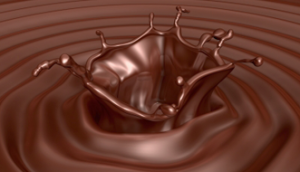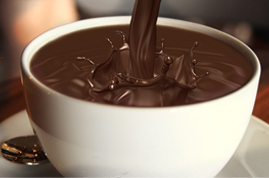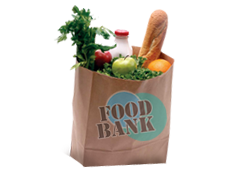ADD SOME VITALITY TO YOUR HOT CHOCOLATE THIS WINTER
 by Lindsay Chimileski, NaturalNews
by Lindsay Chimileski, NaturalNews
As the winter chill blows in, we almost innately brew up some hot chocolate for a warm and tasty treat. When doing so, here’s a few quick and easy ways to revitalize this guilty pleasure and turn it into a medicinal delight.
BEST CHOCOLATE
Obviously, high quality chocolate is fundamentally important. Combine raw, 100% pure cacao powder, pure vanilla extract and your choice of almond, rice or hemp milk. Organic products are always the best option when available.
Raw cacao is extremely high in antioxidants and has been historically considered a power food because of its ability to boost energy. It is also rich in physiologically active phytochemicals, including flavonoids, which boost cardiovascular health and protect from environmental damage. It contains phenylethylamine, copper, magnesium, sulfur, and anandamide. Anandamide is a cannabinoid-like fatty acid known as the “bliss” chemical that results in heightened sensitivity and euphoria. Cacao stimulates the production of serotonin, tyramine and endorphins as well.
ADD HERBS THAT MOVE THE BLOOD
Herbs that move the blood, or improve circulation, have been used for centuries all over the world to restore health. Many different medicinal paradigms, including Traditional Chinese Medicine, consider blood stagnation a root cause of disease. By simply adding a pinch of these herbs, it will help to raise vitality and harness the body’s ability to warm itself, long after the enjoyment of your tasty drink. Spicing up your hot chocolate will keep your body busy and blood moving during this cold, less-active season.
Cayenne (Capsicum), you’ll definitely stay warm throughout the winter with this one. Not only does it add a unique and gourmet flavor, but it is also a circulatory stimulant, vasodilator, carminative, antiseptic, and diaphoretic (causes sweating). It also supports prostaglandins to increase blood flow, which creates that subjective feeling of heat all cayenne-lovers know. In Chinese medicine, cayenne is specifically beneficial in treating exterior conditions, such as the common cold, and in overcoming stagnant Qi. It is also rich in vitamin C.
Cinnamon (Cinnamomum) is rich in antioxidants. It is a carminative, gently warming digestive tonic, and it’s antispasmoic, anti-clotting, antimicrobial and anti-diabetic in large amounts. Be aware that too much can be over stimulating and can cause increased heart rate, gastric emptying and vasomotor activity.
Fresh or dry ginger (Zingiber officinale) is a strong circulatory stimulant, vasodilator, diaphoretic, expectorant, pulmonary antiseptic, antispasmodic, carminative and anti-emetic. It has been used for nausea, vomiting, morning sickness, menstrual cramps, flatulence, suppressed menstruation, bronchitis, aches and spasms.
Caveat: Chinese medicine sees the herbs listed above as very heating, and they are not to be used when signs of heat are present. Too much can be excessively heating and cause drying, so as always, use in moderation.
MEDICINAL FOODS THAT ALSO SWEETEN AND ENRICH FLAVOR
Perhaps a hot chocolate aperitif with raw honey? Raw honey contains an amylase enzyme, concentrated in flower pollen that aids in starch predigestion. Most honey available today is pasteurized, which drastically lowers its vitality and partially destroys its enzymes. Raw honey is a strong antimicrobial. It is also rich in antioxidants and flavonoids and can contain beneficial bits of bee pollen, honeycomb, propolis and even bee fragments.
A tablespoon of Unsulphured Black Strap Molasses will sweetly boost health due to its high minerals. It is rich in iron, calcium, copper, manganese, potassium and magnesium. Most notably, black strap molasses has a significant amount of iron. Because of this it has traditionally been recognized as a power food for menstruating women. Anyone interested in a decadent, rich yet nutritious chocolate PMS tonic?
Enjoy!
Sources for this article include
Natural Standard Professional Monograph. Chocolate, Cacoa. 2011.
Noe, J. Botanical Medicine: Temperature Regulating Herbs. 2011 University of Bridgeport College of Naturopathic Medicine. Bridgeport, CT.
Pitchford, P. Healing with Whole Foods. 2002. North Atlantic Books. Berkley, California.
Sato, T. and Miyata, G. The nutraceutical benefit, part iii: honey. Nutrition 2000;16(6):468-469.
World’s Healthy Foods. Blackstap Molasses. 2011.
About the author:
Lindsay Chimileski is a graduate medical student currently pursuing dual degrees in Naturopathic Medicine and Acupuncture. She has a passion for health education, patient empowerment and the restoration of balance – both on the individual and communal level. She believes all can learn how to live happily, in harmony with nature and in ways that support the body’s innate ability to heal itself.
Courtesy of NaturalNews






